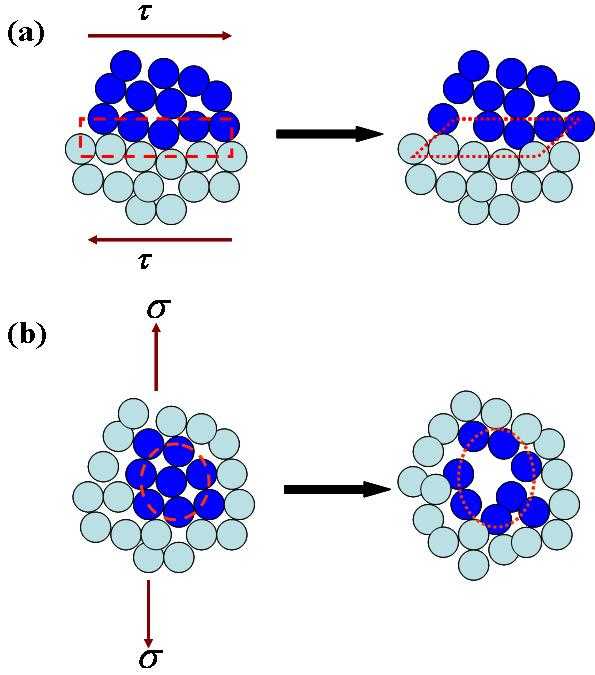博文
Energy dissipation in fracture of bulk metallic glasses via inherent competition
||
Energy dissipation in fracture of bulk metallic glasses via inherent competition between local softening and quasi-cleavage
| Author(s): Jiang MQ (Jiang, M. Q.), Ling Z (Ling, Z.), Meng JX (Meng, J. X.), Dai LH (Dai, L. H.) |
| Source: PHILOSOPHICAL MAGAZINE Volume: 88 Issue: 3 Pages: 407-426 Published: 2008 |
| Times Cited: 0 References: 81 |
| Abstract: Compression, tension and high-velocity plate impact experiments were performed on a typical tough Zr41.2Ti13.8Cu10Ni12.5Be22.5 (Vit 1) bulk metallic glass (BMG) over a wide range of strain rates from similar to 10(-4) to 10(6) s(-1). Surprisingly, fine dimples and periodic corrugations on a nanoscale were also observed on dynamic mode I fracture surfaces of this tough Vit 1. Taking a broad overview of the fracture patterning of specimens, we proposed a criterion to assess whether the fracture of BMGs is essentially brittle or plastic. If the curvature radius of the crack tip is greater than the critical wavelength of meniscus instability [F. Spaepen, Acta Metall. 23 615 (1975); A.S. Argon and M. Salama, Mater. Sci. Eng. 23 219 (1976)], microscale vein patterns and nanoscale dimples appear on crack surfaces. However, in the opposite case, the local quasi-cleavage/separation through local atomic clusters with local softening in the background ahead of the crack tip dominates, producing nanoscale periodic corrugations. At the atomic cluster level, energy dissipation in fracture of BMGs is, therefore, determined by two competing elementary processes, viz. conventional shear transformation zones (STZs) and envisioned tension transformation zones (TTZs) ahead of the crack tip. Finally, the mechanism for the formation of nanoscale periodic corrugation is quantitatively discussed by applying the present energy dissipation mechanism. |
| Document Type: Article |
| Language: English |
| Addresses: Dai, LH (reprint author), Chinese Acad Sci, Inst Mech, State Key Lab Nonlinear Mech, Beijing 100080, Peoples R China Chinese Acad Sci, Inst Mech, State Key Lab Nonlinear Mech, Beijing 100080, Peoples R China |
| E-mail Addresses: lhdai@lnm.imech.ac.cn |
| Publisher: TAYLOR & FRANCIS LTD, 4 PARK SQUARE, MILTON PARK, ABINGDON OX14 4RN, OXON, ENGLAND |
| Subject Category: Materials Science, Multidisciplinary; Mechanics; Metallurgy & Metallurgical Engineering; Physics, Applied; Physics, Condensed Matter |
| IDS Number: 262MU |
| ISSN: 1478-6435 |
| DOI: 10.1080/14786430701864753 |
(a) shear transformatio zone (STZ) and (b) tension transformatio zone (TTZ)
https://blog.sciencenet.cn/blog-43310-22557.html
上一篇:Intrinsic correlation between fragility and bulk modulus in metallic glasses
下一篇:On Mechanical Properties of Metallic Glass and its Liquid Vitrification
